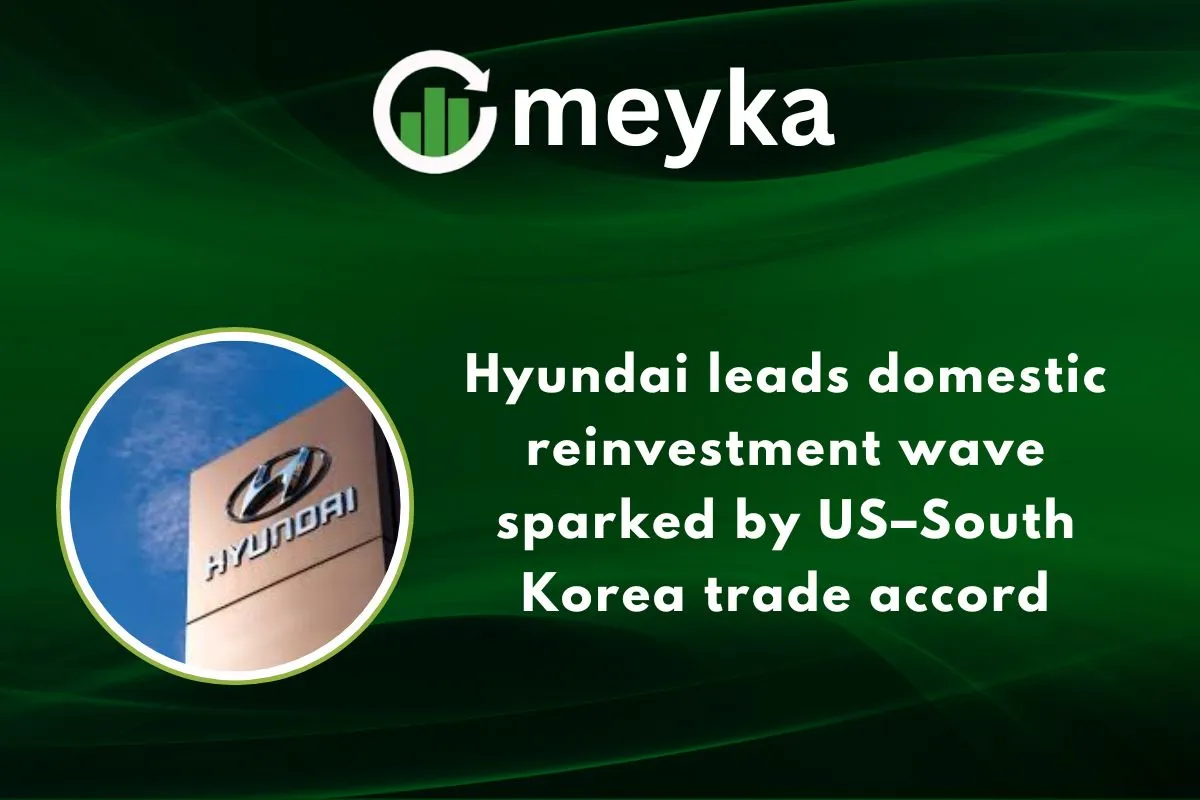Hyundai leads domestic reinvestment wave sparked by US–South Korea trade accord
We are at a pivotal moment for South Korea’s industrial landscape. After a new US–South Korea trade deal lowered auto import tariffs from 25% to 15%, Hyundai Motor Group responded with bold action. The company announced a massive 125.2 trillion won (US$86.47 billion) investment in South Korea, to be deployed between 2026 and 2030. This isn’t just another capital injection. Hyundai intends to spend big on AI, R&D, and modern production facilities. What we’re witnessing could be the start of a major reshoring wave, with Hyundai leading the way and other Korean companies likely to follow.
Background: What the US–South Korea Trade Accord Changes
The recent trade deal between the U.S. and South Korea marks a significant shift. Under this accord, U.S. tariffs on Korean-made cars have been reduced from 25% to 15%. Why does that matter? Well, for decades, high export tariffs made it less attractive for Korean automakers to rely solely on their domestic plants for U.S.-bound sales. Now, with lower costs on exports, companies like Hyundai can produce more in Korea without worrying that U.S. tariffs will eat into their profits. This creates a strong incentive for domestic reinvestment. By bolstering production at home, Hyundai can both increase exports and strengthen local supply chains, making them less vulnerable to global disruptions.
Hyundai’s Strategic Response: Major Domestic Reinvestment
Overview of Hyundai’s investment announcement
Hyundai’s plan to invest 125.2 trillion won is historic in scale. Compared to its previous five‑year plan with Kia (89.1 trillion won during 2021–2025), this is a significant step up.
Boosting Domestic Manufacturing Capacity
A big chunk of this reinvestment will go toward improving and expanding Hyundai’s production facilities. The company plans to modernize factories and scale up its electric vehicle (EV) output. By doing this, Hyundai can generate more exports from its Korean plants, rather than relying only on overseas production.
Strengthening Supply Chain Independence
Hyundai isn’t just building cars; it’s investing heavily in future technologies. About 50.5 trillion won is earmarked for AI and “future business opportunities.” Another 48.4 trillion won will go to research and development. On top of that, 36.2 trillion won is planned for optimizing its production lines and constructing a skyscraper facility.
This strategy indicates Hyundai’s push to reduce dependence on foreign suppliers, especially for critical components. By localizing more of its development and production, Hyundai aims to make its supply chain more resilient.
Economic Impact on South Korea
Employment Growth
We from South Korea could see a surge in jobs as Hyundai and its peers ramp up local investments. More factories mean more workers, not just in manufacturing, but also in software, research, and support industries.
Technological Advancement
Hyundai’s heavy investment in AI and R&D signals its intention to lead in next-gen mobility. These funds could help incubate innovations in electric vehicles, autonomous driving, and hydrogen power.
In fact, Hyundai recently broke ground on a hydrogen fuel cell plant in Ulsan, aiming for completion by 2027. This aligns perfectly with their broader tech-focused investment push.
Increased Global Competitiveness
By strengthening its domestic base, Hyundai is making itself more stable and competitive globally. Producing more in Korea helps it control costs and maintain quality, a clear advantage in the global EV race.
Challenges and Risks Ahead
But this isn’t a guaranteed win. Hyundai still faces several risks:
- Labor Costs: Producing in Korea is more expensive than in some overseas locations.
- Supply Chain Risks: Even with local investment, some parts may remain dependent on foreign suppliers.
- Geopolitical Pressure: U.S.–China tensions could complicate trade further, especially for EV battery materials.
- Sustainability of Investments: Will Hyundai maintain this pace if global demand slows or economic conditions worsen?
Future Outlook
Looking ahead, if Hyundai and other Korean firms deliver on their plans, South Korea could become a powerhouse for high-tech mobility. We might see:
- Korea is emerging as a global hub for EVs, hydrogen technology, and AI-driven vehicles.
- Stronger regional economies thanks to job creation in manufacturing and R&D.
- More collaboration between tech companies, startups, and automakers, boosting innovation.
For Hyundai, this could mean not just being a carmaker, but a leader in future mobility. Its strategy could reshape where and how cars are built, and who leads in the next wave of green technology.
Conclusion
Hyundai’s US$86 billion (125.2 trillion won) investment is more than just a response to a trade deal. It’s a bold wager on South Korea’s industrial future. By focusing on AI, R&D, and production capacity, Hyundai is not only strengthening its own foundations, but it’s setting the tone for an entire reinvestment wave. If other Korean giants follow in its footsteps, we could see a real shift: from dependence on global supply chains to a renewed, home‑grown engine for innovation and growth.
Disclaimer:
The content shared by Meyka AI PTY LTD is solely for research and informational purposes. Meyka is not a financial advisory service, and the information provided should not be considered investment or trading advice.






